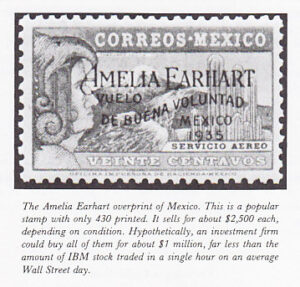Frederick Small was, like many others, a stamp collector during his childhood in Australia. But when he went off to fight in World War I, his parents gave his collection away during some general house cleaning. To Small, it was no matter; the collection was virtually worthless.
As an adult, Small had no interest in postage stamps, but he believed that they possessed investment potential. He remembered the catastrophic inflation of the 1920s, especially in Germany, where currency became almost worthless. Wheel barrels of money were required for food marketing, and inflation was so rapid that employees had their salaries renegotiated twice a day. The mark went from 3 to the dollar to 3 billion to the dollar in three years. That’s inflation!
In 1940, Small turned to a philatelic investment counselor whom he trusted. He began to collect British Guiana not because he liked the stamps of that country, but because the country appeared to him and his adviser to be undervalued at that particular point in history. Collecting, like clothing, has its fashions, and it is rare for any country or stamp to remain permanently out of favor.
The decision to collect British Guiana was also affected by the fact that the country issued the rarest stamp in the world— the unique One Cent Magenta. Small bought the stamp in 1939 for around $50,000. He sold it in 1970 for $280,000 at public auction. Even after commission, he realized a profit of over 500 percent, exceptional in the low inflation period of 1940-70. The syndicate of Pennsylvania investors who resold the stamp in 1980 for $935,000 gained over a half million dollars in ten years, more than enough to cover the inflationary decade of the 1970s. But Frederick Small was never a collector. “I didn’t consider my stamp collection as a hobby,” he said before his death, “but as an investment, just like shares of stock.” Neither did the Pennsylvania syndicate consider the collector value of this stamp. They, too, were hard-nosed investors looking for a profit.
Roger Demmy was different. He was not a wealthy man, but he loved stamps. He had been collecting them since 1905; he saved every one he had ever gotten, and he was obstinate enough to collect just the countries he liked. In the 1930s, Demmy bought first issue Japanese stamps. This was the era of “yellow peril” fever, and dealers were happy to sell Demmy all of the classic Japan that they had for 10 cents and 15 cents each. Today, these stamps sell for upward of $300 each. Demmy had hundred of them.
Demmy worked all of his life as a night watchman at a chemical plant in Chicago. He was a serious philatelist who also collected Sweden and Great Britain. Until 1960, Demmy never spent more than $20 a week on his collection. When he died in 1975, his stamps were worth over $200,000. The reason– simple! He bought stamps for virtually nothing that increased in value thousands of times. Not foresight as much as luck; even if Demmy’s stamps went nowhere, he would have loved them anyway. But he bought classics, rare stamps for which there was demand.
Small and Demmy represent different investment positions. One is the pure investor, the other the hobbyist. They both made substantial profits as they each learned what they were doing, sought expert advice, and had long-range plans.

